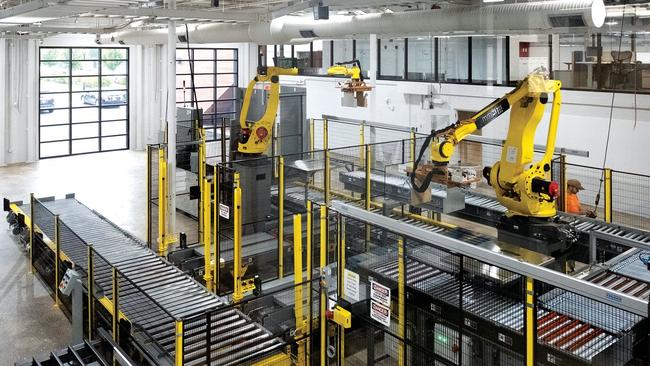Bridging Australia’s skills gap through automation

In the post-war 1940s, a critical labour shortage saw migrants step into the breach and, quite literally, help to build Australia. In recent years, digital skills have emerged as the nation’s Achilles heel – and the pandemic has made the problem more acute than ever.
Not only has the coronavirus accelerated digital transformation and cloud adoption as businesses recover from the recession and adapt to new ways of working, the closure of international borders has also cut businesses off from the skilled migrants who would help steer these transformations.
Unfortunately, one of the key technologies Australian organisations are investing in to digitise and gain economic advantage in response to the pandemic – cloud computing – is also one of the areas with the largest skills gaps.
Sky-high demand for cloud engineers
As a direct result of the pandemic, our recent Enterprise Cloud Index found 54 per cent of Australian organisations increased their investment in public cloud, 41 per cent increased hybrid cloud investment, and 36 per cent invested in additional private cloud capabilities.
Consequently, 38 per cent of Australian organisations will be using two or more public clouds – in addition to their private cloud – by the end of this year.
Many of these new investments were made haphazardly as existing work from home capabilities had to be rapidly scaled up and expanded last year – given the speed with which these had to be made, there was little time for strategic thinking.
Businesses are now looking to simplify the management of these complex environments, particularly when it comes to data integration and application mobility across various clouds, but the skills to do so are rare – particularly with borders closed to skilled migrants.
In fact, more than a third (35 per cent) of Australian businesses said their IT department lacked skills for managing hybrid cloud environments and 36 per cent said they were shy on talent in cloud-native and container technologies, such as Kubernetes.
Even before the pandemic, these skills were in high demand with job ads for ‘cloud engineers’ rising 142 per cent between 2018 and 2019. With cloud adoption accelerating as businesses navigate the disruption, the need for talent who can deliver on the strategic and economic benefits promised by cloud has never been greater.
To put this in perspective, a recent report from RMIT and Deloitte Access Economics suggested Australia needs 156,000 new technology workers by 2025 and that 87 per cent of all jobs available now require digital skills.
Advantage through automation
To bridge this gap, many Australian enterprises see automation as a solution to gain the most out of current resources – both human and digital.
Once viewed negatively as taking jobs away from humans, automation is seeing an increase in uptake as a way to allow scarce IT resources to focus on more strategic projects. In fact, the latest Enterprise Cloud Index referenced earlier found 27 per cent of Australian IT leaders saw automation as a key priority in the next 12 months.
By reducing human intervention in processes such as deploying user environments, managing database life cycles, and deploying cloud workloads, skilled engineers can focus on tasks that move the needle and deliver economic advantage.
A case in point is Queensland’s RACQ. Simplifying its IT infrastructure is predicted to generate $500,000 in savings over the next five years by freeing up staff to work on projects that deliver more value to the business and increase the pace of innovation.
Rather than having a team dedicated to running hardware, applying updates, and other routine maintenance, these talented engineers can now focus on developing capabilities in the automation, orchestration, security, and optimisation spaces. This also greatly accelerates RACQ’s ability to innovate as the infrastructure needed to develop new products and services can now be provisioned in less than a day – where it previously took five times longer.
While there has been a concerted effort on the part of government and industry to inspire more young Australians to develop skills in cloud, digital, cyber security, and other in-demand technologies, it will be some time until this bears fruit.
In the meantime, Australian enterprises face the immediate challenge of transforming their businesses for a digital-first future. Automating low-level IT tasks not only ensures current resources are dedicated to projects that drive the business forward, it also ensures Australia’s future engineers enter a workforce that values and develops their high-level skills – rather than just their ability to keep the lights on.
Lee Thompson is A/NZ Managing Director at hybrid and multicloud computing company, Nutanix



For decades Australia has relied on skilled migrants to overcome its skills gaps and drive the economy forward.